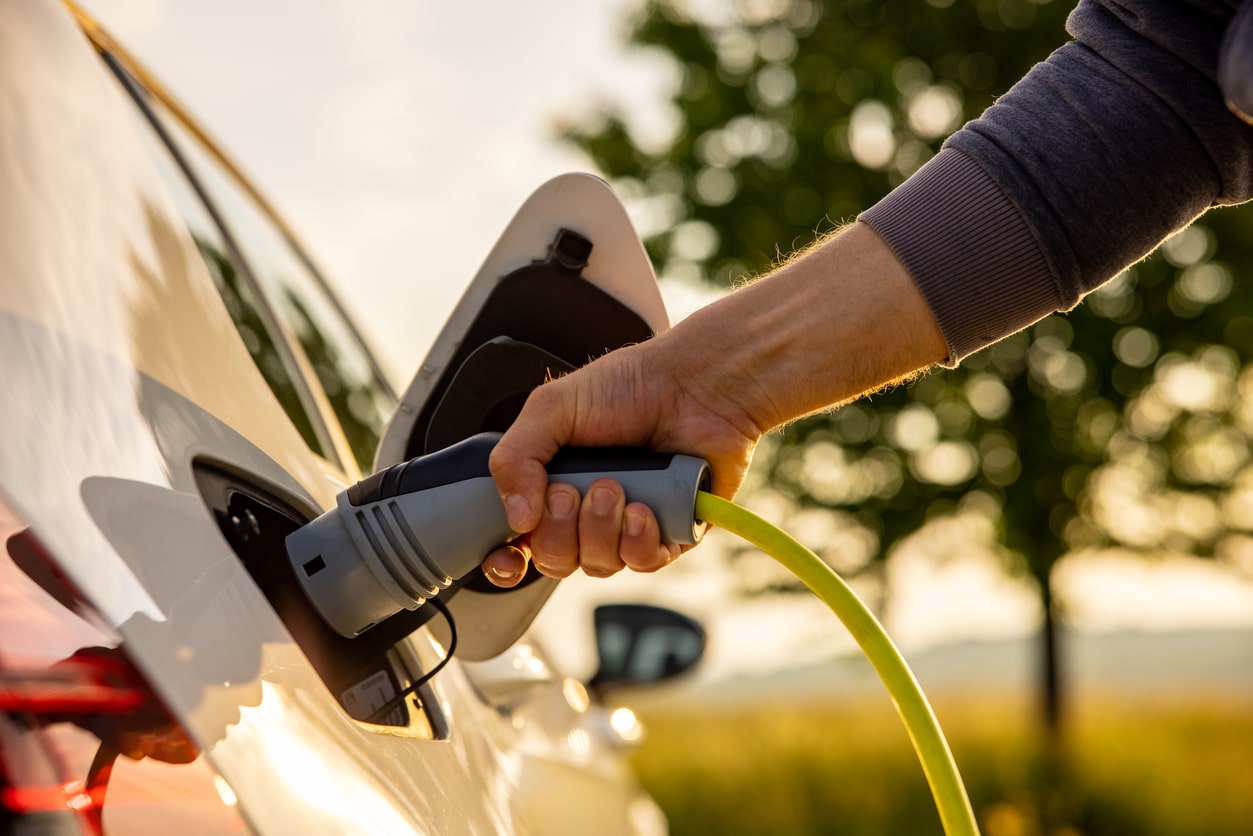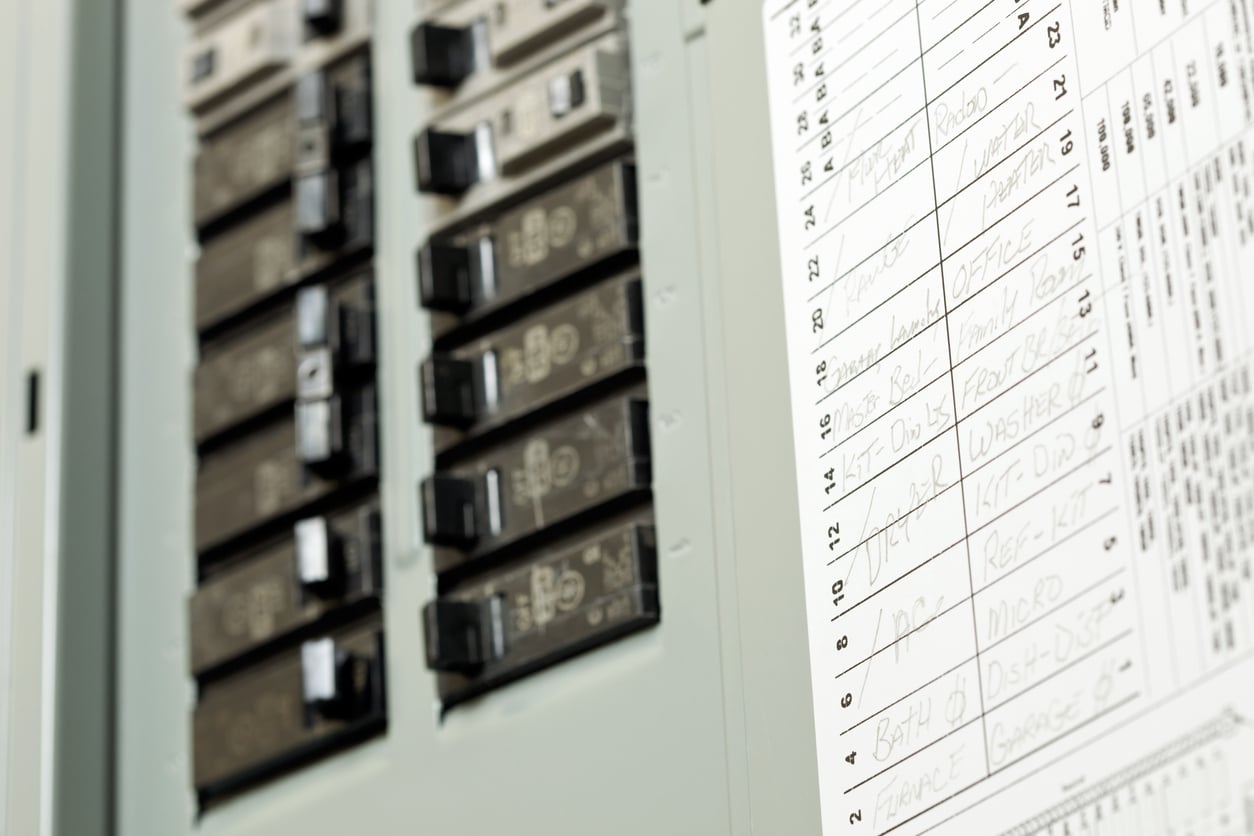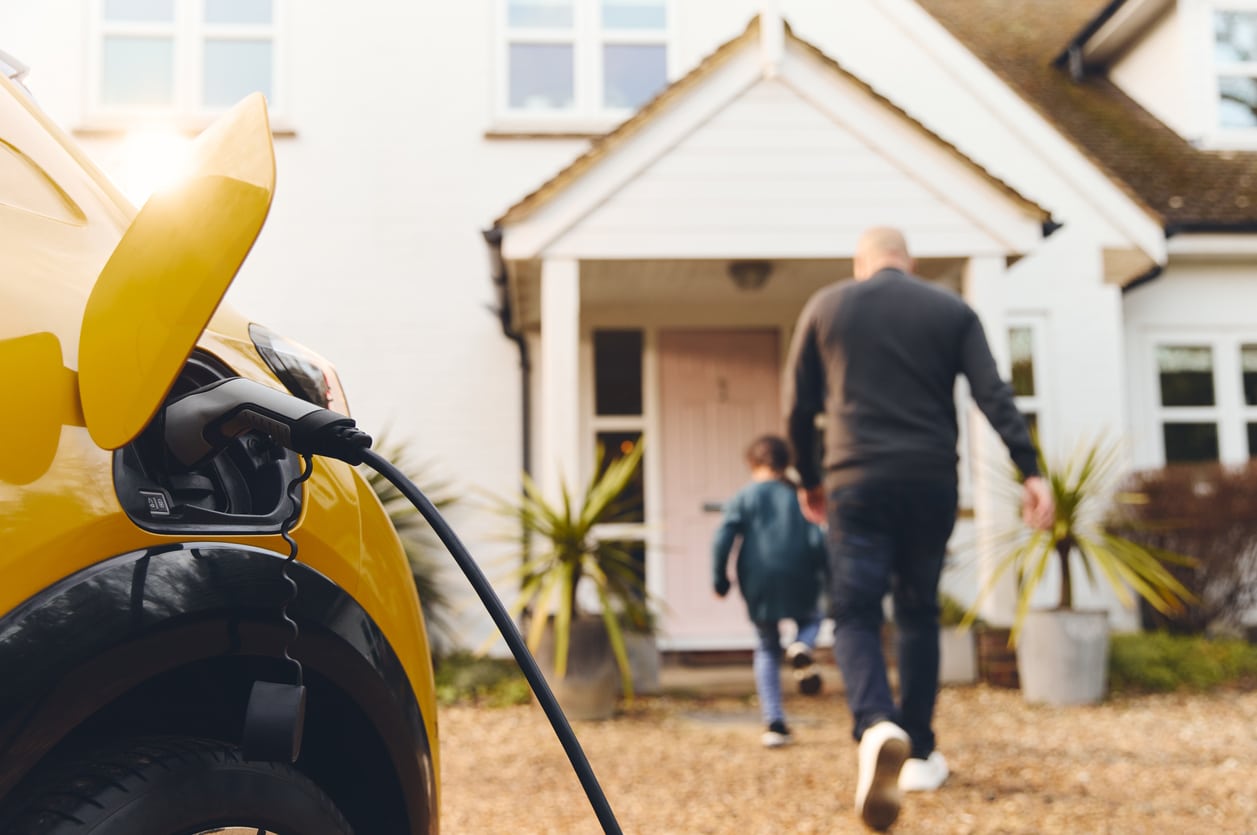Electric vehicles provide an eco-friendly way to get around town with less gas and overall energy use. For homeowners interested in electric vehicles, having a way to charge them at home is convenient. A home EV charger provides the freedom to enjoy electric vehicles without relying on community-based charging stations.
Table of Contents
- How Do EV Chargers Work?
- Types of EV Chargers
- AC Chargers
- DC Chargers
- Determining the Best EV Charger For Your Home
- Installation Cost Considerations
- Energy Load Calculations and Considerations
- Additional Considerations
- Home EV Charger Rebates & Tax Credits
- Frequently Asked Questions About Home EV Chargers
How Do EV Chargers Work?
EV chargers take electrical current from your home or the community’s electrical grid and transform it into the electricity your electric vehicle needs. The vehicle stores that energy in its battery until you are ready to drive.
EV chargers have a battery charger that converts AC to DC for the car. It also controls the speed of the charging process to protect your home and your vehicle.
Types of EV Chargers
As you consider the best type of charging station to install in your home, you need to understand the three main types of EV chargers on the market. These fall into the following categories: Level 1, Level 2, and Level 3.
AC Chargers
Both Level 1 and Level 2 EV chargers are AC chargers, which convert power from AC to DC before transferring it into the vehicle. Most home EV chargers are AC chargers.[1]
Level 1 EV Chargers
Level 1 chargers plug into standard 120-volt wall outlets. They deliver about five miles of driving range per hour of charging. They come standard with any EV you purchase and require no additional installation. Just plug your car into your garage wall outlet and let it charge overnight to get to and from work. This type of charger also works well for hybrid vehicles since they can switch to fuel power if the battery runs out.
Level 1 chargers are the most affordable option because there is no upfront cost. Simply use the outlet you already have. They’re also the slowest option for charging your vehicle.
Level 2 EV Chargers
Level 2 chargers are 240-volt outlets, similar to the outlet you use for your electric dryer. They deliver 25 miles of charge per hour. This is the charger you’ll likely find in public charging areas. It’s the faster but more expensive type of home charging station.
PIf you want a Level 2 charger in your home, you must have it installed by an electrician. This is a better option if you need to drive long distances or charge more quickly. You can get a full charge in 8 to 10 hours. Your EV will come with the right connector to use this type of charging station.
DC Chargers
The fastest way to charge an electric vehicle is by skipping the step of changing the power from AC to DC. DC charging stations do this, and they are known as Level 3 chargers.
Level 3 Chargers
A Level 3 EV charger can charge up to 250 miles of range an hour, and you can charge your car to 80% capacity in as little as 20 minutes. However, you cannot install this type of EV charger for home use. The only way to use one is to find a DC charging station in the community.
Determining the Best EV Charger for Your Home

While you can charge a car at home with either a Level 1 or Level 2 EV charger, level 2 chargers tend to offer the most versatility. Because these charge so much more quickly, with a full charge possible if you plug it in overnight, they provide the most function for the price.
However, if you have a hybrid vehicle or your budget is tight, a Level 1 charging station may be best for your needs. In addition, you may find that a Level 1 station is all you need. Similarly, if you use your electric vehicle for a very short range and can charge it for multiple hours regularly, you may find Level 1 is sufficient.
Installation Cost Considerations
The cost to install a Level 2 home EV charger is between $400 and $6,500,[2] depending on where you live, the type of charging station you choose, and how it needs to be installed. Before moving forward, always get a quote from your installation team in St Louis and Nashville.
On the other hand, if you decide to use a Level 1 charging system, there is no cost for installation. Your garage likely already has a standard outlet you can use.
Energy Load Calculations and Considerations
While charging your vehicle at home is the most convenient option when you own an EV, you must ensure your home’s electrical system can handle it. Sometimes, you must upgrade the home’s electrical system to support a Level 2 charging station.
To determine if you’ll need to upgrade, you must perform load calculations. Electrical panels all come with a limited load capacity, and you will need to ensure that your panel can handle the demand of an EV charger. Most systems require 32 to 80 amps to charge a vehicle properly on a 240-volt charger. A qualified electrician can help calculate this and determine the best action for your home EV charger installation.

If your current electrical system can’t handle the extra load, you have three options:
- Upgrading your electrical panel: Increasing the number of amps the panel can handle will allow you to use an EV charging station.
- Adding a load controller: This device attaches to a specific circuit to trip the breaker if you exceed the limit.
- Installing a smart panel: This is the most costly addition, but a smart panel makes sense if you plan additional technological additions to your home in the future.
If you’re curious about which option is best for you, contact an experienced EV charger installer to walk you through your options and help you make an informed choice.
Additional Considerations
In addition to the installation cost, consider the cost of using your new EV charging station. For most drivers, the cost of electricity is far less than the cost of gasoline. The cost also varies depending on how much you drive. Still, the Department of Energy estimates that most homeowners will spend about $60 monthly keeping their EVs charged.[3] Public charging systems that charge based on kWh average anywhere between $0.30 and $0.60 per kWh compared to $0.16 per kWh at home, making charging at home over 50% cheaper.
Charging your EV in public can take anywhere from thirty minutes to several hours depending on the charger type and availability. At home, you can simply plug in your car before bed and wake up to a full charge. No more sitting in parking lots or lines waiting for your car to charge. The convenience of home charging alone makes installing a level 2 charger worthwhile for most EV owners.
Home EV Charger Rebates & Tax Credits

While the cost to install a home EV charger can be high, there are ways to save. Rebates from manufacturers and tax credits from the government can help. The federal government is offering a 30% tax credit, up to $1,000, for installing an EV charger at home. This credit extends through the end of 2032.[4]
In addition, many states offer similar perks to people who choose this eco-friendly option. These rebates and tax credits help you save as much as possible on your new EV charging station and encourage eco-friendly home upgrades.
EV Charger FAQs
Yes, Type 1 and Type 2 EV chargers are possible in homes. Type 3 EV chargers cannot be installed in homes but can be found at community charging stations.
It takes about 7,200 watts of electricity to charge a home vehicle charger. Although, this may vary depending on the charger you choose to install.
Yes, with a Type 1 charger, you can plug an EV into a regular outlet. However, this type of EV charger takes longer to charge your vehicle, with about five miles of distance per hour spent charging.
Most home EV chargers require 32 to 40 amps to operate safely. You will want a small buffer, so have at least 50 amps for a 40 amp charger.
The type of breaker you need for an EV home charger depends on the type of charger you choose. If the charger is a 32 amp charger, you need at least a 40 amp breaker; if it is a 40 amp charger, you need a 50 amp breaker.
Type 1 and Type 2 chargers are AC chargers, with Type 1 plugging into regular home outlets and Type 2 plugging into 240-volt outlets. Type 3 chargers, which are not available for homes, deliver DC charge directly.



